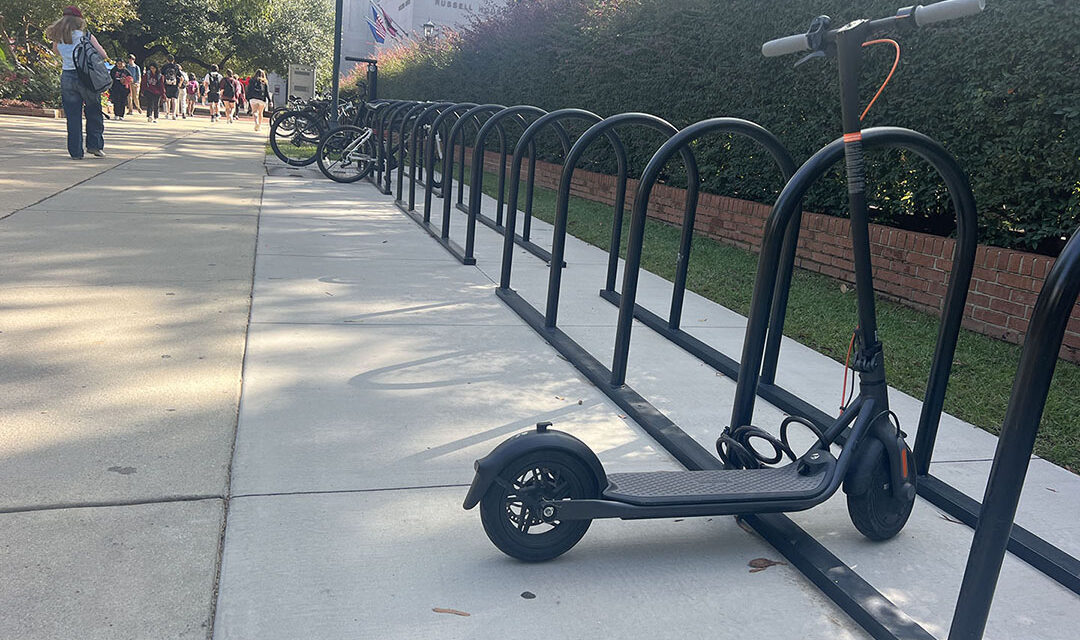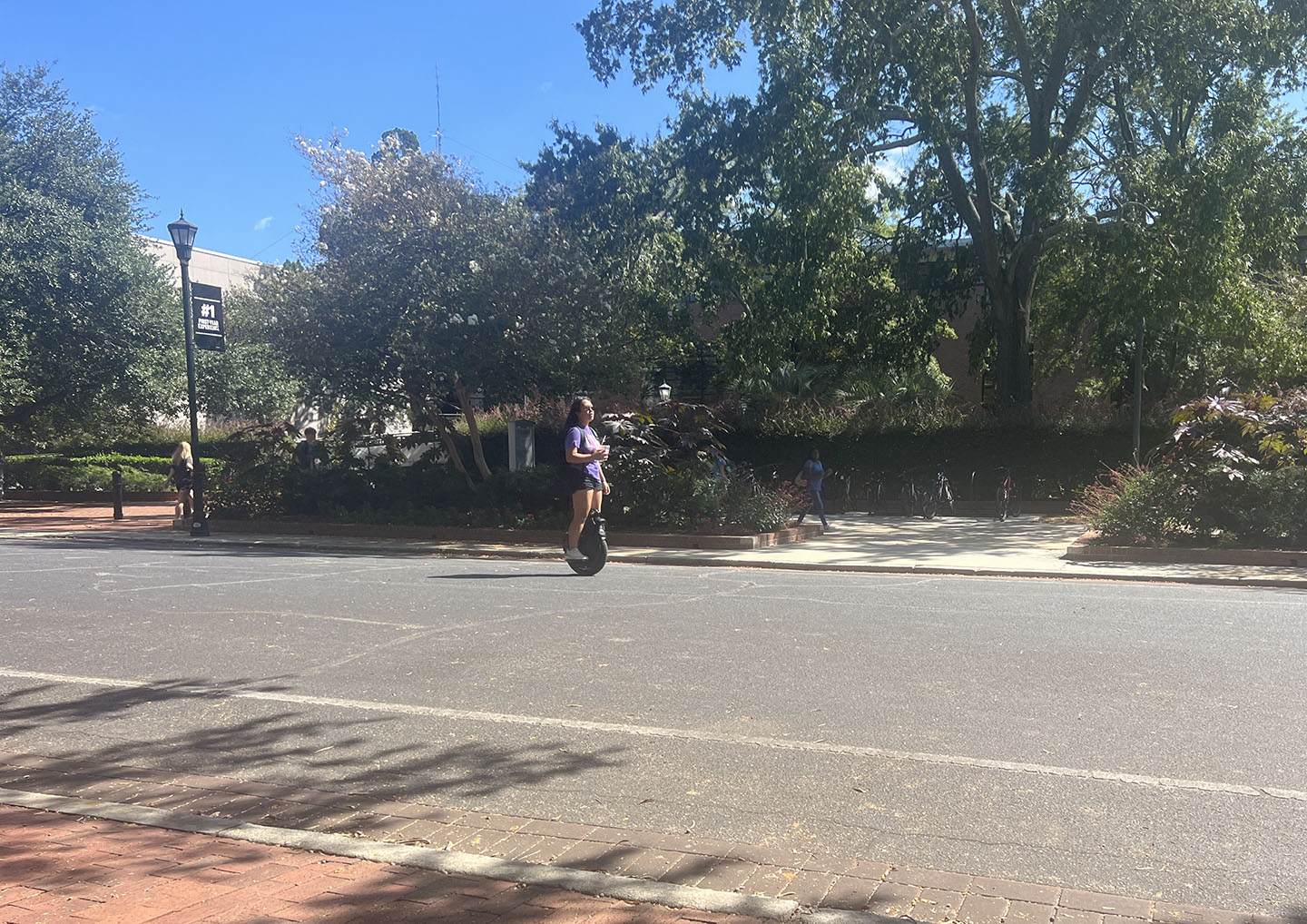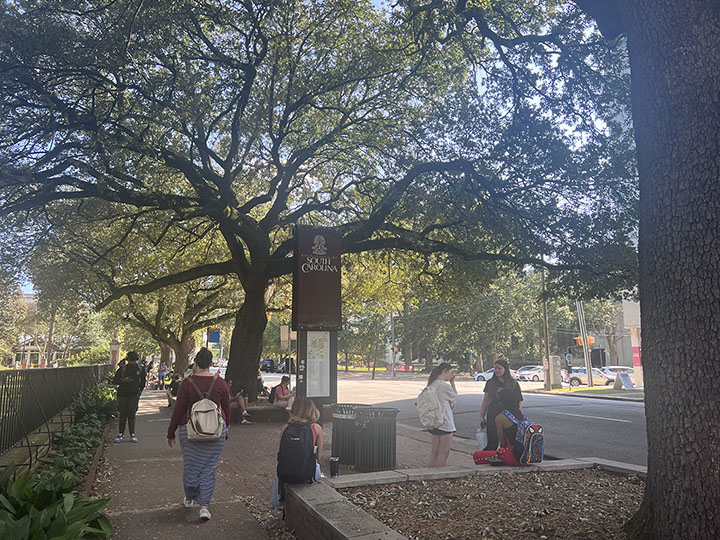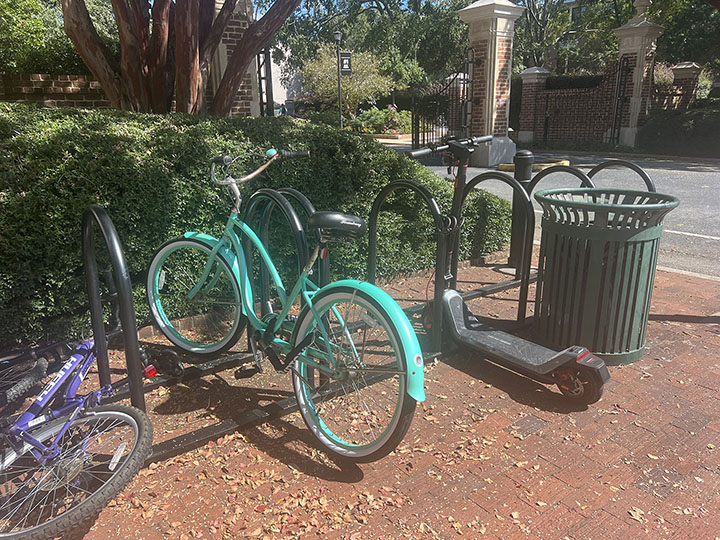An electric scooter is parked on a bike rack in front of USC’s Russell House student union. (Photos by Sophia Laico/Carolina News and Reporter)
Students dart across USC’s urban campus on bicycles, skateboards and mopeds.
But now, the mobile scholars might be on to a new trend.
More are riding electric scooters, said Capt. Eric Grabski of the University of South Carolina’s Division of Law Enforcement and Safety.
Grabski’s observation comes at a time when South Carolina doesn’t have many regulations for electric scooters.
People who own mopeds, motorcycles and golf carts have to register them with the S.C. Department of Motor Vehicles.
But the rules don’t say owners have to register electric scooters.
USC also does not require scooters to be registered, leaving it without a way to keep track of how many are on the roads.
The city of Columbia does have some regulations for electric scooters, such as the kinds of roads users can travel on.
Columbia defines a motor scooter as a vehicle without a saddle.
These micro-mobility vehicles are not allowed to ride on sidewalks or be on public streets with speed limits of 25 mph or greater. Riders also must wear a helmet that has reflectors on two sides as well as a neck or chin strap.
USC student and electric scooter owner Patrick Bailey also has noticed more scooters on campus.
“People are starting to realize that it’s just easier that way, and it’s worth the money,” Bailey said.
One student, Emily Largent, said it’s not just about money but about time.
“I woke up this morning, and I was already late for school,” Largent said. “It was like 8:05, my class started in 25 minutes, and I got on my scooter and ran. I got there in like five minutes. It really saves time. I catch an extra minute of sleep.”
Saving time isn’t the only benefit that students see.
“It’s a lot cleaner than getting around on a car,” Bailey said.
Grabski said irresponsible scooter parking has not been an issue. Oftentimes, the scooter are properly secured, he said.
But he still has concerns regarding other pedestrians’ safety.
Zipping in and out of lines of traffic or driving too fast, especially in pedestrian-heavy areas, is not the way to go.
“Human life and human safety is a priority and one of our core values,” Grabski said. “… Safety is the No. 1 concern.”





